The fresh face on the EMLO home page with a correspondence catalogue published this week is that of the mathematician Joachim Jungius. Born in Lübeck in 1587, Jungius considered mathematics and logic to be the foundation of all areas of scientific study, and — as you might expect — his own work took him into a number of different spheres, including those of astronomy and medicine. For nearly thirty years until his death in 1657, this mathematician occupied the chair of natural sciences at the Akademisches Gymnasium in Hamburg.
Six years ago, when I began to research the history of one of EMLO’s foundation collections, that of the Bodleian card catalogue, and put together a piece on the three individuals who turned out to be involved with it, I read a fascinating article by Noel Malcolm, ‘Thomas Harrison and his “Ark of Studies”: An Episode in the History of the Organization of Knowledge’, and a publication by Markus Krajewski entitled Paper Machines: About Cards and Catalogs, 1548–1929.[1. Noel Malcolm, ‘Thomas Harrison and his “Ark of Studies”: An Episode in the History of the Organization of Knowledge’, The Seventeenth Century, 19:2 (2004), pp. 196–232, and Markus Krajewski, Paper Machines: About Cards and Catalogs, 1548–1929, tr. Peter Krapp (Cambridge, MA, 2011).] It was here that I encountered Joachim Jungius for the first time. Krajewski describes Jungius as the ‘first practitioner of nonhierachical indexing’ on account of his accumulation of approximately 150,000 pieces of paper, all of which contained fragments of knowledge, that were bound and sorted ‘according to the most minute details’ but ‘without registers or indexes, let alone reference systems’.[2. Krajewski, op. cit., p. 17.] Krajewski summarizes the mathematician’s method as a way of gathering ‘treasures without being recombined and published as new books. Jungius, keen on including new resources, delays his own publications time and again, leaving them unfinished or simply as raw paper slip potential in storage, on call.’[3. Krajewski, op. cit., p. 17, and Christoph Meinel, ‘Enzyklopädie der Welt und Verzettelung des Wissens: Aporien der Empirie bei Joachim Jungius’, in Enzyklopädien der Frühen Neuzeit. Beiträge zu ihrer Erforschung, ed. Franz M. Eybl, Wolfgang Harms, Hans-Henrik Krummacher, and Werner Welzig (Vienna, Tübingen, and Mainz, 1995), p. 177.]
Jungius and his work was well known to Samuel Hartlib, Jan Amos Comenius, and members of their circles, and users of EMLO will find him discussed in a number of letters written in the mid-seventeenth century. Hartlib himself writes of Jungius to Robert Boyle: ‘The author of Isagoge Phytoscopica is Dr. Jungius of Hamburgh, one of the best logicians in all Germany. For he conceives if that art were truly understood and applied, not only botanical, but all other real studies whatsoever, would flourish more than they have done since the fall of Adam. Leges Collegii Protonoetici came from the same forementioned author: but they will scarcely be understood, without the general draught of his philosophical undertakings, which I shall impart unto you hereafter, God willing.'[4. Letter from Samuel Hartlib to Robert Boyle, 8 May 1654, see Michael Hunter, Antonio Clercuzio, and Lawrence Principe, eds, The Correspondence of Robert Boyle, 6 vols. (London, 2001), i, pp. 169–79, and Robert Boyle, The Works of the Honourable Robert Boyle. ed. Thomas Birch, 5 vols (London, 1744), v, pp. 261–4.] Jungius died in Hamburg in the year in which Gottfried Wilhelm Leibniz celebrated his eleventh birthday. In the decades following his death, Jungius’s pupils pursued discussions on how best to order knowledge, including notes and excerpts of text, and their considerations culminated in the publication (note the publisher) of Vincent Placcius’s De Arte Excerpendi. Vom gelahrten Buchhalten, a work that offered a historical overview of indexing, a summary of contemporary filing sytems, and guidance in the art of ‘excerpting’ and storing knowledge.[5. Vincent Placcius, De Arte Excerpendi. Vom gelahrten Buchhalten (Stockholm, Hamburg: Bei Gottfried Liebezeit, 1689.)]
Noel Malcolm’s research on Thomas Harrison, the Oxford-educated Northamptonshire rector who languished for a considerable period of his life in prison, enriches the picture considerably, offering substantial detail of Harrison’s indexing invention — the ‘Arca studiorum‘ — and surveying the ‘general tendency of the age, towards what might be called the physical technologizing of knowledge’.[6. Malcolm, op. cit., p. 217.] In what he terms a ‘surprising postscript’ to the article, we are able to follow the link back, via Placcius, from Leibniz to Harrison’s ‘Ark of Studies’.[7. Malcolm, op. cit., pp. 220–1.] Jungius, his note-taking, his filing system, and his pupil and editor Martin Fogel play a part in this tale and Malcolm traces the description of Harrison’s invention printed by Placcius that was based on a manuscript in the possession of Johann Adolf Tassius (1585–1654). Tassius was Jungius’s deputy at the Akademisches Gymnasium in Hamburg.
Leibniz is known to have carried paper with him at all times and to have made and filed notes, his ‘Zettel’. In his private library, Krajewski relates, Leibniz ‘was in the habit of writing his excerpts on special sheets or slips of paper, and it is likely that he adopted this method from Martino Fogelio (who edited the Jungiana) [. . .] Yet his method stems from Joach. Jungius. Thus, he also maintained his library according to topical order, without regard for different formats. Leibniz imitated this . . . and applied it to his own private library. He had small labels stuck to repositories that indicated what was contained on every shelf.’[8. See Christoph Gottlieb von Murr, ‘Von Leibnitzens Exzerpirschrank’, in Journal zur Kunstgeschichte und allgemeinen Litteratur, 7, pp. 210ff, and Krajewski, op. cit., pp. 19–20.] However, Leibniz had been collecting and storing his papers systematically from the late 1660s. Certainly he had a strong interest in Jungius’s work. But he was not able to see any of Jungius’s or of Fogel’s original papers for a further decade until he visited Hamburg in 1678. Fogel had died three years previously leaving a library that numbered approximately 3,600 volumes, and Leibniz had persuaded his employer, Duke Johann Friedrich of Brunswick-Luenburg, that he should purchase this library from Fogel’s widow. Leibniz spent over six weeks in the city, where he met Placcius, Vagetius, and Sivers. While on site, he inspected the papers of both Jungius and Fogel and attempted to purchase a selection. Although his request was turned down, he was permitted to borrow eighty-six manuscript bundles on the clear understanding that these would be returned. Despite repeated requests from the family of Fogel regarding the loan, these manuscripts remain today in the care of the Gottfried Wilhelm Leibniz Bibliothek.[9. Immeasurable thanks are due to Dr Philip Beeley, who has an article in preparation on Leibniz and Jungius, for these fulsome details concerning the visit of Leibniz to Hamburg.]
Such a glimpse offered through the towering figure of Leibniz into the filing habits of Jungius is mesmerizing, and I hope users will enjoy exploring the latter’s correspondence catalogue in EMLO. The metadata for 506 letters in total have been drawn from the edition prepared by Professor Martin Rothkegel and based on the work of Bernd Elsner (published in 2005 by Vandenhoeck & Ruprecht in Göttingen), and each letter record in EMLO links to the text of the edition that has been made available by Professor Rothkegel on Academia.[10. Der Briefwechsel des Joachim Jungius, ed. Martin Rothkegel, based on the work of Bernd Elsner (Göttingen: Vandenhoeck & Ruprecht, 2005).]
In this hot summer month, happy reading to all of both letters and research on early modern schemes for the organization of knowledge!
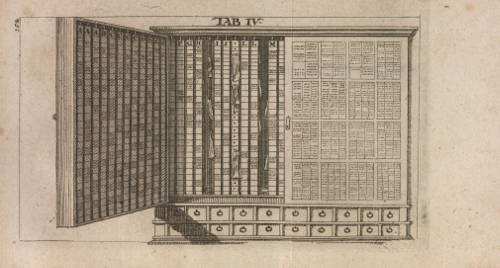
The ‘Ark of Studies’, plate IV from Vincentius Placcius, ‘De arte excerpendi’ (Stockholm and Hamburg, 1689). (Source of image: Wikimedia Commons)


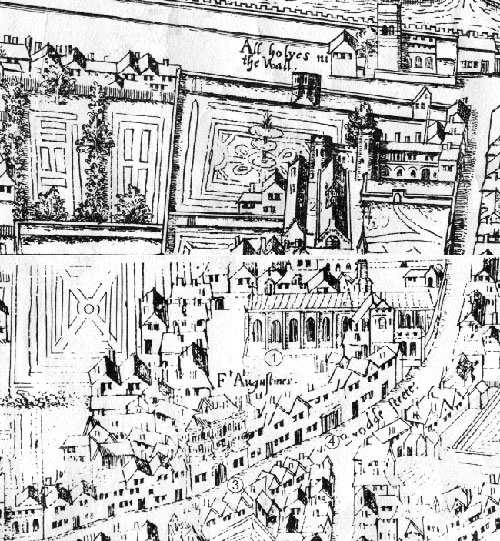
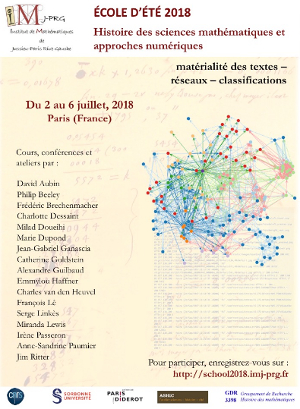 With a plenary to deliver and a series of workshops to run in the course of the week, Philip Beeley, Charlotte Marique, and I ‘packed’ a variety of sample letters from the correspondences of early modern practitioners of mathematics, all of whom either have catalogues in EMLO or for whom we are in the process of preparing an epistolary inventory. Along with letters by John Collins, we took (in alphabetical order to avoid any excuse for dispute!) examples from the correspondences of
With a plenary to deliver and a series of workshops to run in the course of the week, Philip Beeley, Charlotte Marique, and I ‘packed’ a variety of sample letters from the correspondences of early modern practitioners of mathematics, all of whom either have catalogues in EMLO or for whom we are in the process of preparing an epistolary inventory. Along with letters by John Collins, we took (in alphabetical order to avoid any excuse for dispute!) examples from the correspondences of 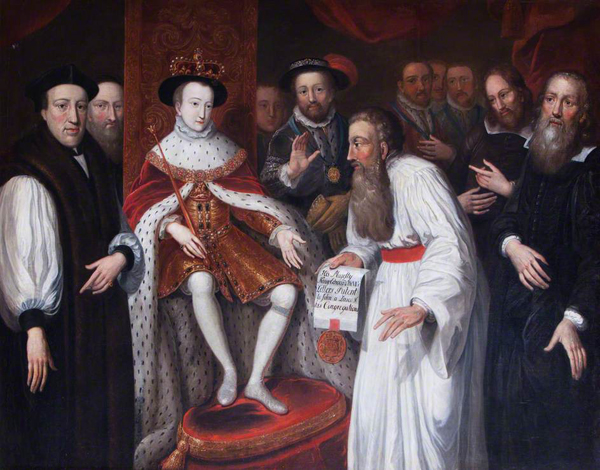
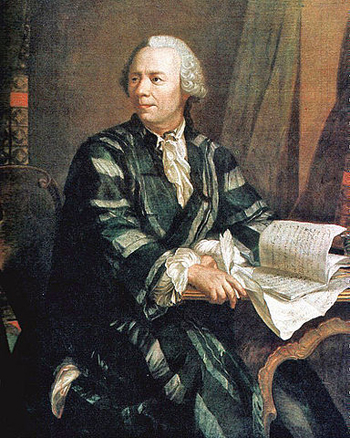
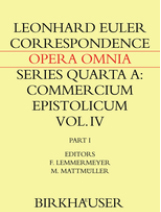 The records of the Euler-Goldbach letters in EMLO provide links to texts that have just been released the new virtual research environment platform (currently in beta) under development in Basel:
The records of the Euler-Goldbach letters in EMLO provide links to texts that have just been released the new virtual research environment platform (currently in beta) under development in Basel: 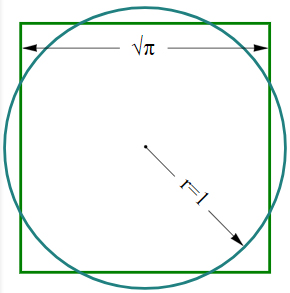
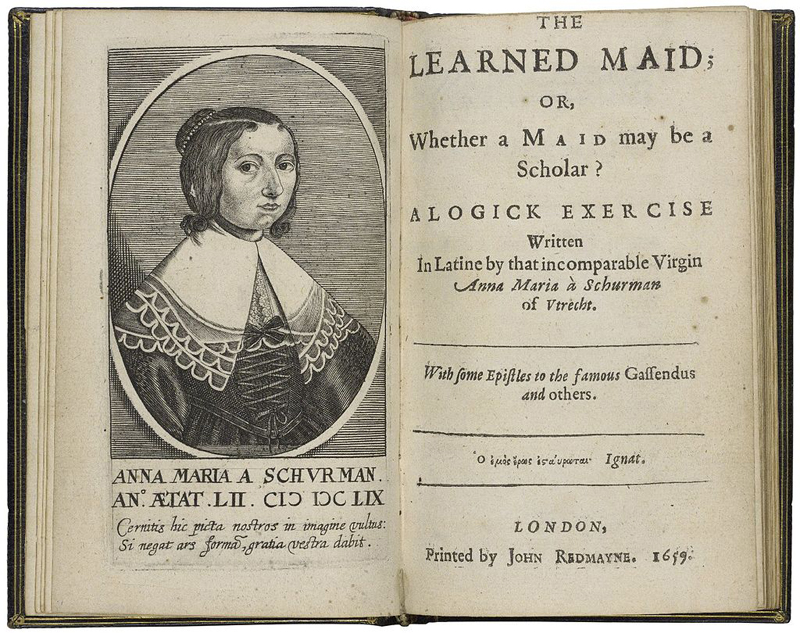

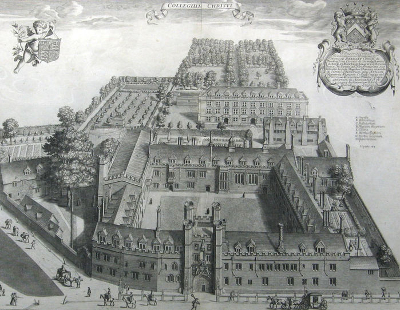
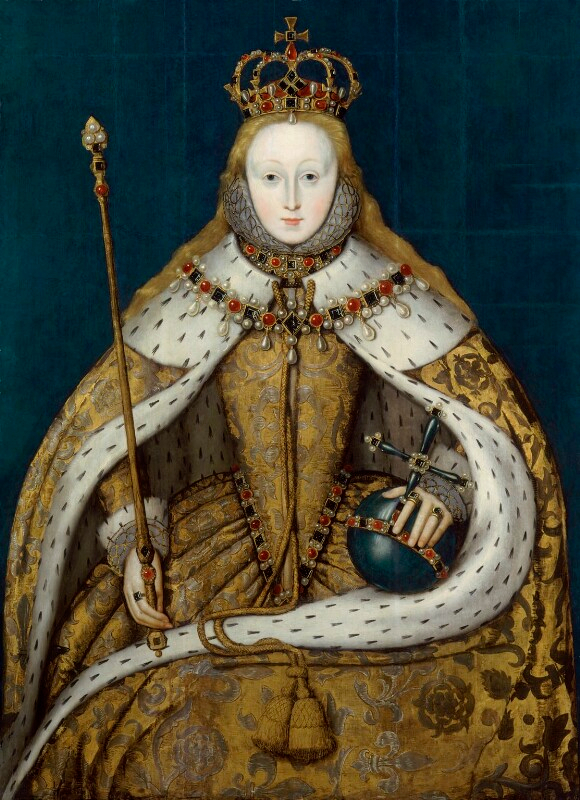
 When EMLO launched its
When EMLO launched its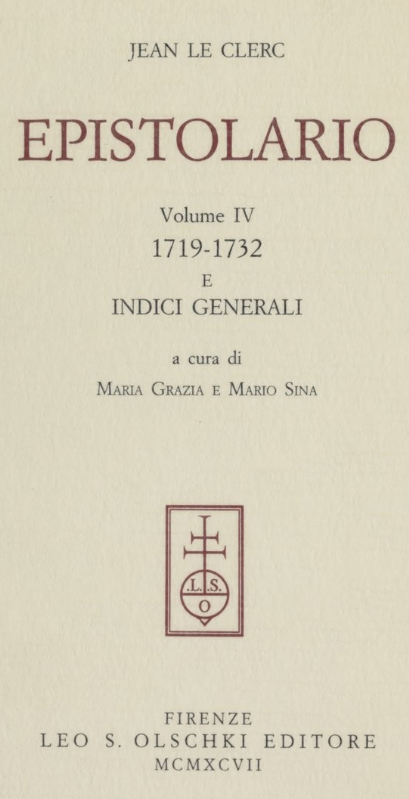 Le Clerc (1657–1736) stands today a towering figure at the heart of the golden age of the république des lettres. As a scholar, he published widely, in particular a number of key critical works, yet perhaps of more significance still he was renowned far and wide during his lifetime for his rigorous and insightful activity as a journalist. Le Clerc’s correspondence has been collected, studied, edited, and published by the scholars Mario Sina and Maria Grazia Zaccone-Sina, and their
Le Clerc (1657–1736) stands today a towering figure at the heart of the golden age of the république des lettres. As a scholar, he published widely, in particular a number of key critical works, yet perhaps of more significance still he was renowned far and wide during his lifetime for his rigorous and insightful activity as a journalist. Le Clerc’s correspondence has been collected, studied, edited, and published by the scholars Mario Sina and Maria Grazia Zaccone-Sina, and their 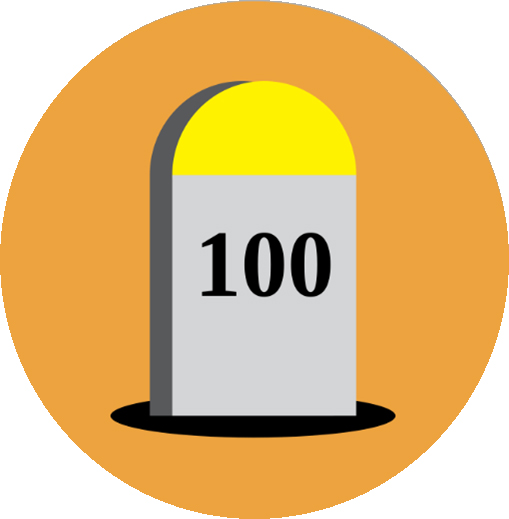 Over the course of this year, Le Clerc will be joined by many more Huguenots, by many more philosophers, and by many more theologians, and the groupings of corresponding individuals, including astronomers, cartographers, collectors, diplomats, intelligencers, mathematicians, natural philosophers, physicians, and scholars — men and
Over the course of this year, Le Clerc will be joined by many more Huguenots, by many more philosophers, and by many more theologians, and the groupings of corresponding individuals, including astronomers, cartographers, collectors, diplomats, intelligencers, mathematicians, natural philosophers, physicians, and scholars — men and